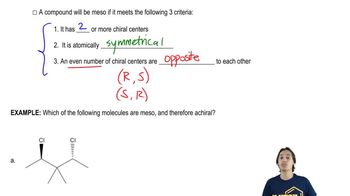Which of the following compounds are meso?
(f)
 Verified step by step guidance
Verified step by step guidance Verified video answer for a similar problem:
Verified video answer for a similar problem:



 2:15m
2:15mMaster Recognizing chiral molecules with zero chiral centers. with a bite sized video explanation from Johnny
Start learning